As the Trump campaign’s legal challenges sputter to a near halt, presidential observers are eager to turn to the season’s parlor game of choice: speculation over who will get the “big jobs” in the next administration. Typical prospects include high-dollar donors, senior campaign advisers, and those who have a long personal or professional history with the president-elect. But during his acceptance speech in Philadelphia, President-elect Biden acknowledged the groundswell of support from Black voters throughout the election process when he stated, “…especially for those moments when this campaign was at its lowest—the African-American community stood up again for me. They always have my back, and I’ll have yours.” Taken by itself, this statement can either suggest that the incoming administration will heavily focus on the policy issues affecting Black Americans (e.g., pandemic, joblessness, police brutality, etc.), appoint Black leaders to senior-level positions at agencies, or a combination of both.
Early Cabinet selections and the composition of the Biden transition team suggest that achieving racial and gender diversity is indeed a goal. Not since President Clinton has such attention been given to diversity in presidential appointments. Seven Cabinet positions were filled by Black leaders during the two terms of the Clinton-Gore presidency. The Biden administration can be equally diverse and have his legacy extend beyond Cabinet positions.
To date, Janet Yellen, Avril Haines, and Linda Thomas-Greenfield have been announced as key Cabinet and Cabinet-level picks. Last week, Alejandro Mayorkas was announced for Secretary of Homeland Security, the first Latino to lead the agency. The transition teams are also comprised of more than 46% people of color, which offers a pool of potential candidates to be considered for other senior leadership positions.
But will the Biden-Harris presidency also recognize and reward the loyalty of Black voters, especially Black women, by appointing them to high-level positions from Cabinet secretaries to other senior roles in his administration? Last week, Congressman James Clyburn (D-SC) called out the early waves of presidential appointments for not including Black Americans in more high-ranking positions. The Congressional Black Caucus is advocating that Biden select the former Obama Secretary of Homeland Security, Jeh Johnson, to be the first Black Defense Secretary in history. However, this recommendation is being challenged by some progressives and white women who prefer to go in a different direction.
Enacting more formal and transparent processes in the selection and hiring practices for the nearly 1,200 Senate-confirmed appointments across the federal government may address competing opinions, especially those guided by race, gender, and ideology. We gathered relevant data on the first 100, 200, and 300 days of Senate confirmations from the last three former presidents Bush, Obama, and Trump. We examined racial/ethnic composition and gender breakdown of Senate-confirmed appointments to provide an expectations benchmark for the incoming administration. We conclude with four proposals to encourage diversity in hiring throughout the course of the Biden-Harris administration, starting with the establishment of a White House Office on Diversity and Inclusion.
Biden could have the most diversity in his Cabinet since President Clinton
Figures 1 and 2 demonstrate the racial/ethnic diversity and gender composition of Senate confirmations during the first 100 days from the Bush, Obama, and Trump administrations. Taken together, roughly 72 percent of all appointees were white individuals and 73 percent were men, showing that if President-elect Biden can achieve 30 percent for both racial/ethnic diversity and inclusion of women, his efforts will be pathbreaking.
But like his predecessors, President-elect Biden will certainly have a mammoth task on his hands as he seeks to balance the ideological differences of the country and achieve diversity among his presidential appointments. In addition to the concerns from Black lawmakers, civil rights organizations are questioning both the process for selection of Senate-confirmed positions and their lack of involvement in the decision-making of qualified Black appointees.
Whoever President-elect Biden selects will also undergo some level of scrutiny if the Senate is controlled by Republicans after the Georgia run-off elections in January 2021. A Republican-controlled Senate may either adamantly reject progressive nominations, avoid diversity altogether to maintain the white identity politics of the previous administration, or comfortably approve Blacks and other people of color to dismiss potential concerns about diversity. A Republican-controlled Senate can also choose to selectively scrutinize certain nominees for whatever reason.
That is why having clear expectations and transparent processes to identify and select Black and other diverse candidates are starting points for the Biden administration to achieve diversity and acknowledge the role of Black voters in his victory.
Four approaches to bringing more Blacks into senior-ranking Cabinet positions
To get started, the Biden-Harris administration might consider the following proposals that position diversity and inclusion at the center of their decision-making:
- Establish an inaugural Office of Diversity and Inclusion in the White House whose aim is to develop criteria for diverse hiring and retention, along with a formal public dashboard to let the American public know how many people of color (by race and ethnicity) and women are being appointed to key leadership positions.
- Adopt formally the use of the “Rooney Rule”, which was conceived by the National Football League in 2003 that requires interviews with candidates of color for head jobs in coaching and general management. In 2017, Congresswoman Nancy Pelosi (D-Calif.) required the practice in the hiring of House Democratic congressional staff. Since 2018, Senate Minority Leader Chuck Schumer (D-N.Y.) has incorporated the practice into the Senate Democratic Diversity Initiative, which aims to ensure the representation of demographically under-represented groups. Since 2017, the Initiative—which is fully staffed—issues progress reports on their retention of diverse talent.
- Keep breaking new ground. The incoming administration has already set precedents that even Clinton did not generate. Selecting Senator Kamala Harris (D-Calif.) as the first woman of color to become vice president will be remembered by every little girl of color who desires to achieve her level of leadership. Janet Yellen, Brookings senior fellow and former chair of the Federal Reserve Board, will be the first woman to lead the Treasury Department. Alejandro Mayorkas, a Cuban American, will be the first Latino secretary of homeland security and can overturn some of the egregious Trump- and Obama-era immigration policies. Who will be “the firsts” among Black Americans in key leadership positions to pay some homage to their community’s massive voter turnout and add their voices to the most senior-level national discussions?
- Avoid solely placing Black candidates into positions traditionally set aside for them, especially those primarily serving certain demographic groups. Our review of the data suggests that since the Bush administration, Blacks have traditionally been appointed to Secretary positions in the following agencies: Departments of Housing and Urban Development, Health and Human Services, Education, Transportation, and Veterans Affairs. Under Obama, two Black Americans held key roles as the nation’s Attorneys General, and Bush appointed two Blacks to serve as Secretary of State. Aggressively considering Black appointees for other federal agencies will discredit the assumption that leaders of color (and women) are profiled into certain jobs or not readily available and qualified for such leadership positions. The candidates are out there. Organizations like the Joint Center for Political and Economic Studies have been identifying Black talent for a range of positions in the federal government and is most recently pivoting their work to positions in the incoming administration.
The world is watching as more names are announced for this next administration. At Brookings, we are watching too as we monitor the appointments at pivotal moments in the administration’s first year. In a politically and racially fractured nation, moving toward increased representation of all leaders by race, gender, sexual orientation, and ideology does not occur by accident. More importantly, diversity should not just focus on representation. Rather, investments in diverse talent not only help make America stronger and more resilient, but it gets us closer to our constitutional mandates, resulting in a more perfect and inclusive union.
Special thanks to Noah Montemarano and Mishaela Robison for expert research assistance.
The Brookings Institution is committed to quality, independence, and impact.
We are supported by a diverse array of funders. In line with our values and policies, each Brookings publication represents the sole views of its author(s).

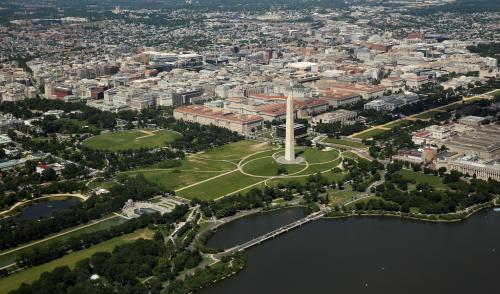
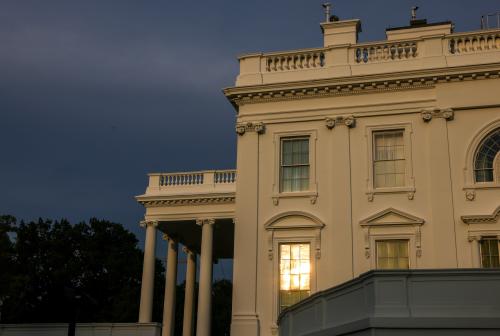
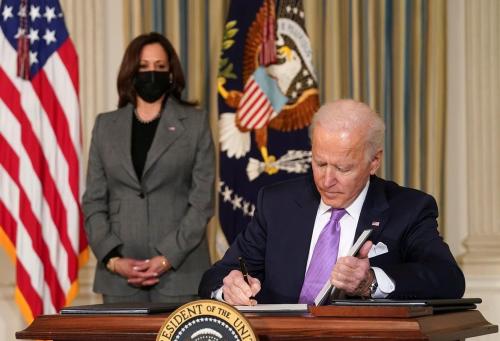
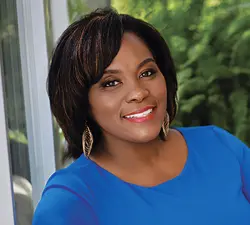
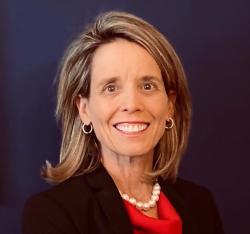


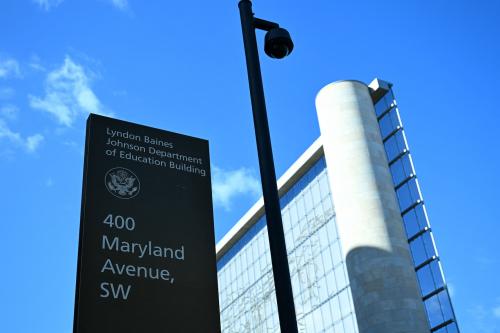
Commentary
Keeping his promises? Black presidential appointments in the Biden administration
December 4, 2020